Fungi can be many colours, shapes, sizes and have many associations. Most common in late autumn but fungi can appear throughout the year.
Fungi are essential to woodland decay and recycling of nutrients. This process can begin in mature trees as well as damaged trees and standing stumps. But, for the most part, fungi thrive in response to fallen wood, standing stumps, and breaking down vegetation on the woodland floor - in short, rot. In an ancient woodland, the woodland floor is rich in a wide variety of fungal communities. The byproducts of this natural process increase water retention, invertebrate populations, nutrient recycling, and provide homes to a wide range of mammals and birds.
Fungi found in or adjacent to Toll Wood
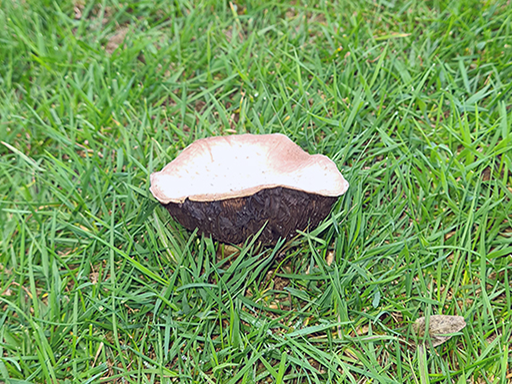
Agaricus bitorquis uncertain
- Pavement mushroom
- Meadow adjacent
|
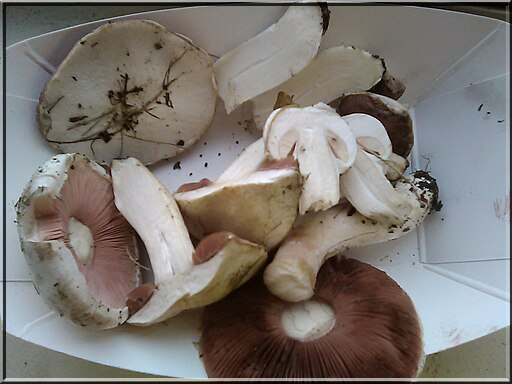
* Agaricus campestris
- Field Mushroom
- Meadow adjacent
|
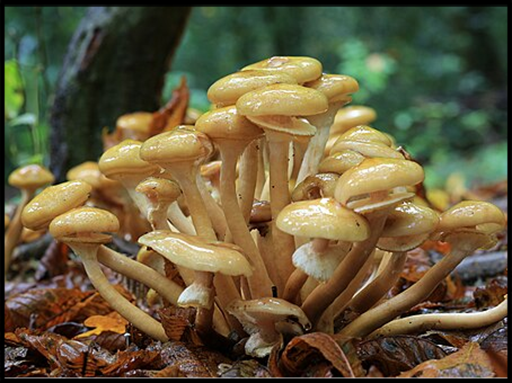 * Armillaria mellea * Armillaria mellea
- Honey Fungus
- On elm
|

Auricularia auricula-judae. Spring
- Jelly ear (also Jews Ear Fungus)
-
Common on deciduous, esp elder
|
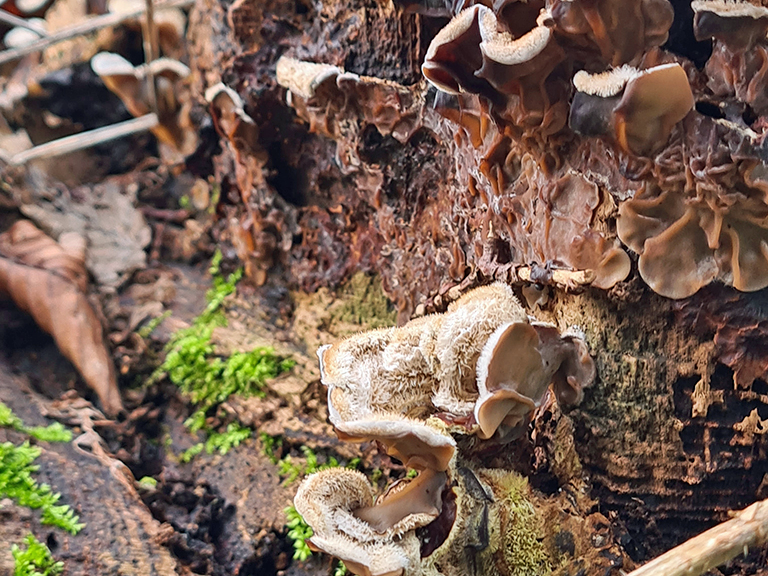
Old examples
|
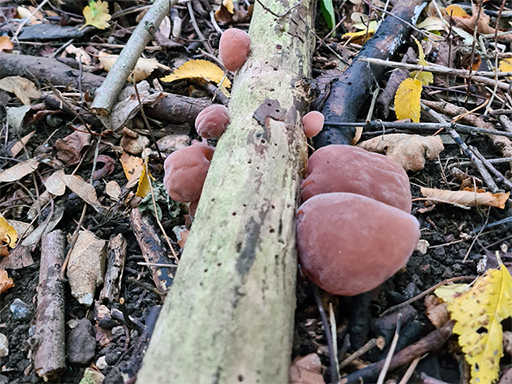
* Auricularia auricula-judae. Autumn
- Jelly ear (also Jews Ear fungus)
- Common on deciduous, esp elder
|
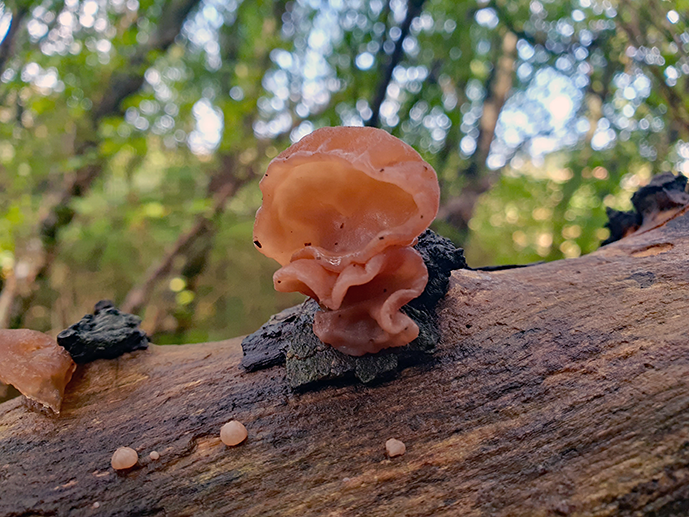
* Auricularia auricula-judae. Autumn
- Jelly ear (also Jews Ear fungus)
- Common on deciduous, esp elder
|
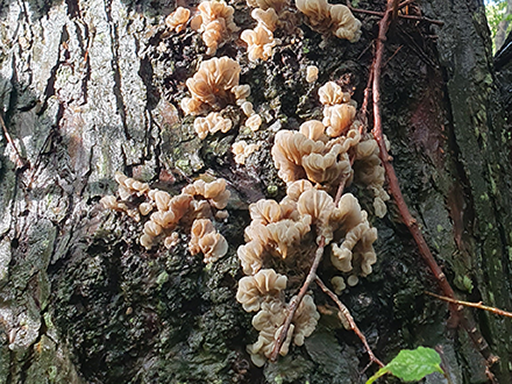
# Auricularia mesenterica
- Tripe fungus
-
on elm
* (also 2023 - S Vaughan)
|
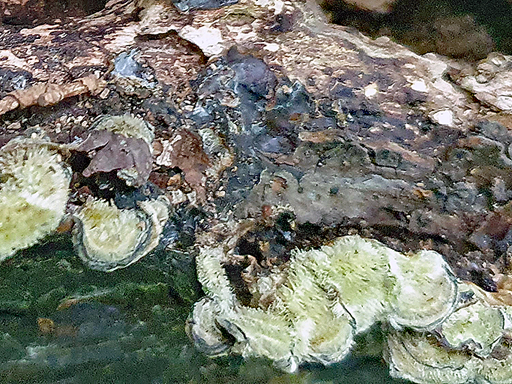
# Auricularia mesenterica
- Tripe fungus
- dead
|
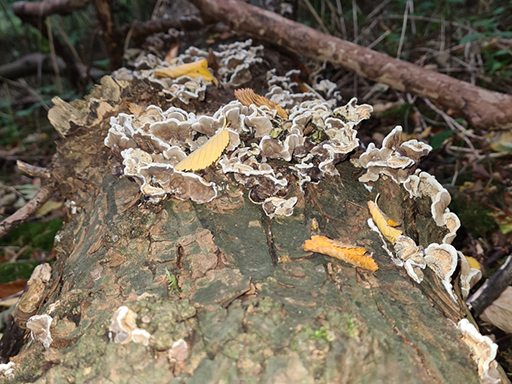
Bjerkandera adusta possible?
-
Smokey Polypore
- common on dead wood
|
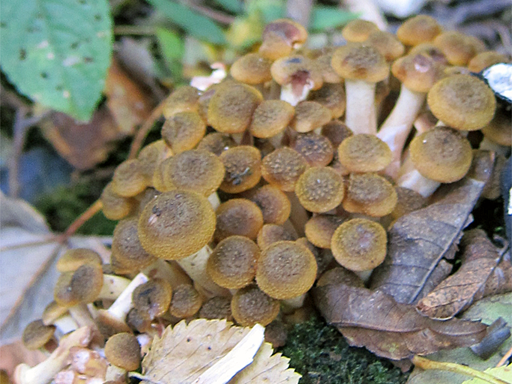
Buna-Shimeji, Hypsizigus tessellatus possible?
- Brown Beech mushrooms
- Honey fungus look-alike?
|
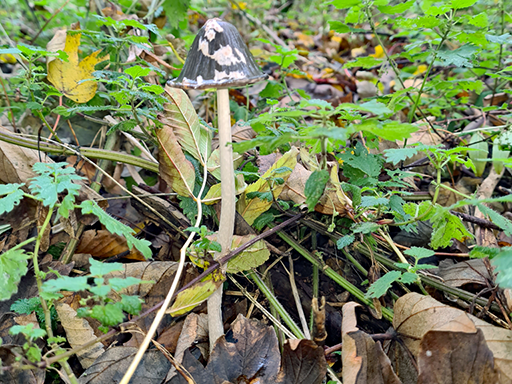
Caprinus picaceus
- Magpie Inkcap
- present
|

Caprinus picaceus - gills
- Magpie Inkcap
- present
|
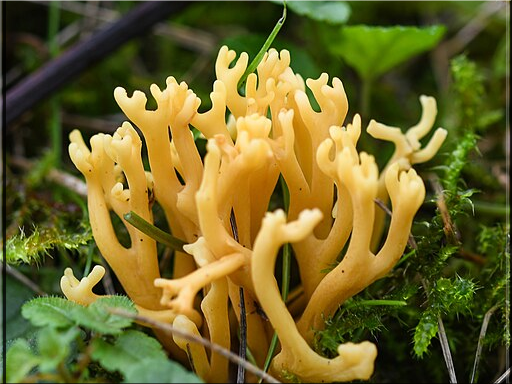
* Clavulinopsis corniculata
-
Meadow Coral
- present
|

* Coprinellus disseminatus
- Fairy Inkcap
-
On elm
|
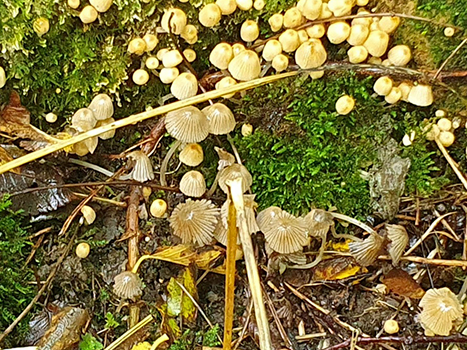 * Coprinellus disseminatus * Coprinellus disseminatus
- Fairy Inkcap
-
On elm
|
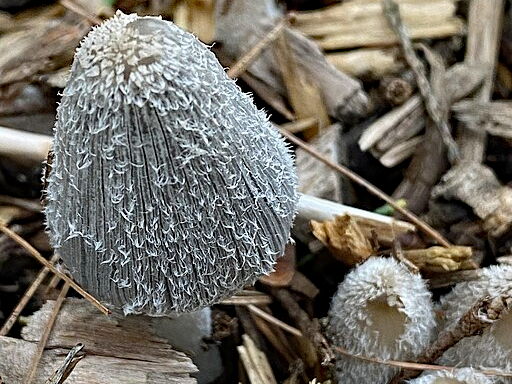
* Coprinopsis lagopus
-
Hare'sfoot Inkcap
- On elm
|
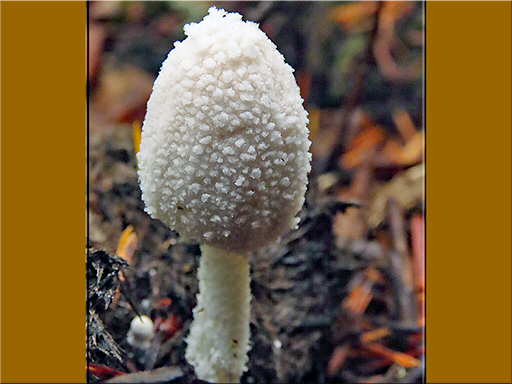
* Coprinopsis nivea
- Snowy inkcap
- adjoining field and in the wood
|
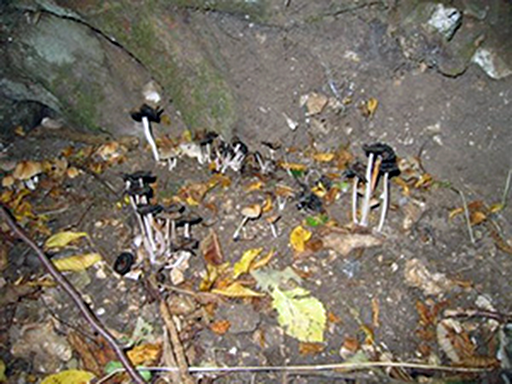
# Coprinus micaceus
- Glistening Ink-cap
- on dead or buried wood
|
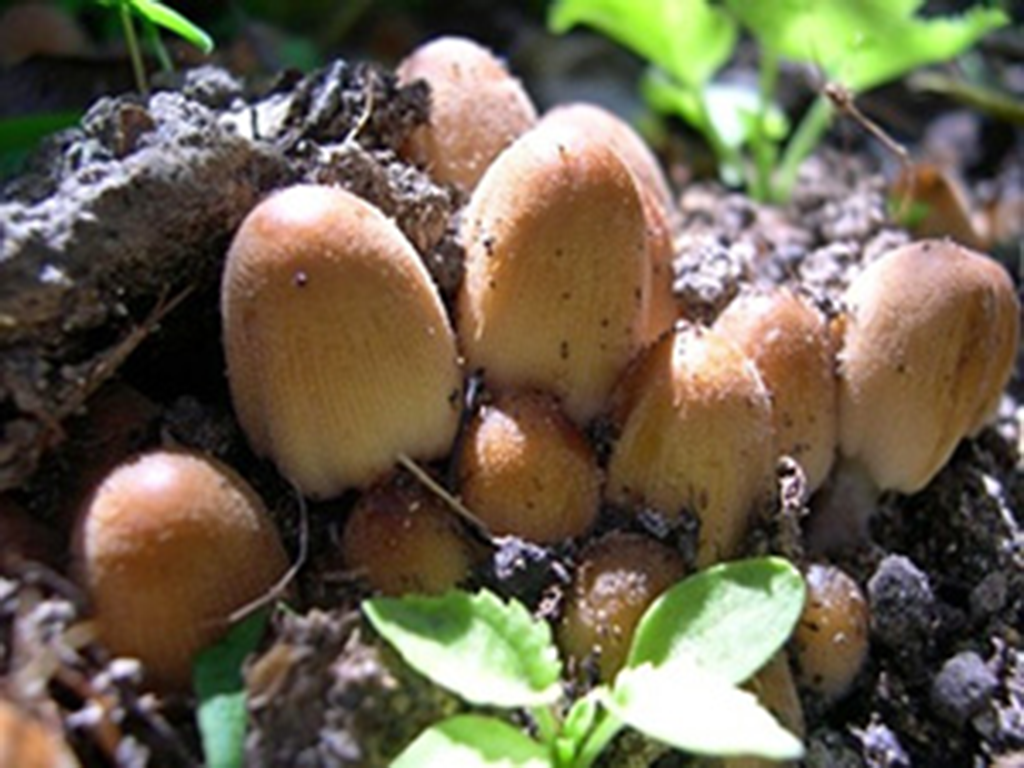
# Coprinus micaceus
- Glistening Ink-cap
- on dead or buried wood
|
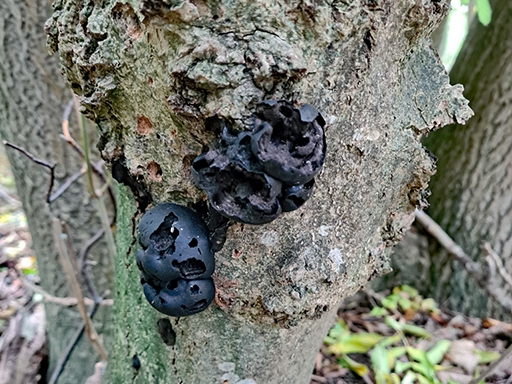
Daldinia concentrica
- Cramp balls or King Alfred's Cakes
- Almost exclusively on ash
|
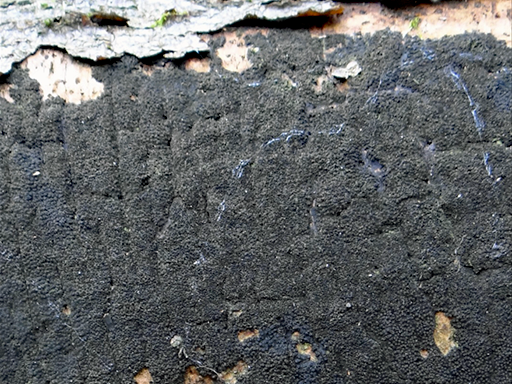
# Diatrype stigma
- Common tarcrust
- favours beech
|
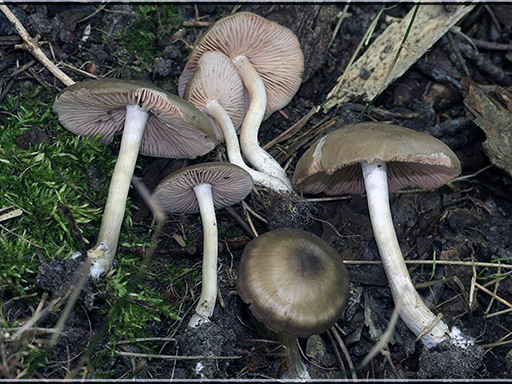
* Entoloma clypeatum
- Shield Pinkgill
- Under elm
|
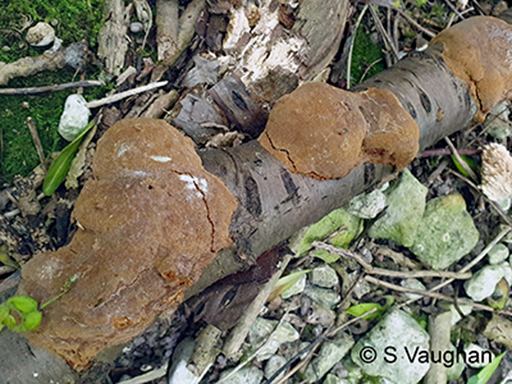
Fuscoporia ferrea
(alt. Phellinus ferreus)
- Cinnamon porecrust
- merged colonies
-
a huge family, difficult to be certain of identification
- favours hazel, causing rapid decay to white
rot
|
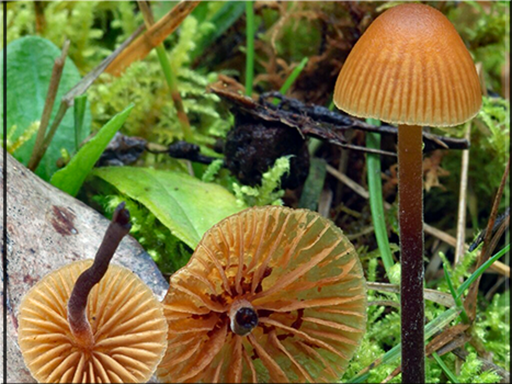
* Galerina hypnorum
- Moss Bell
- In adjoining field
|
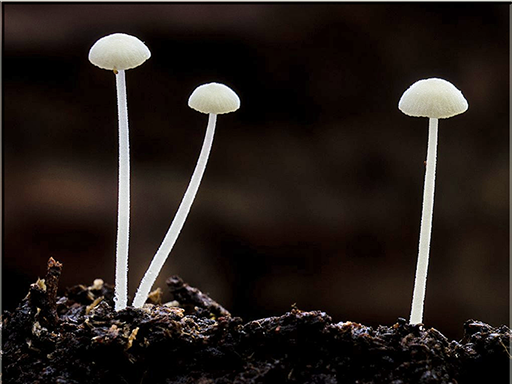
* Hemimycena tortuosa
- Dewdrop Bonnet
- Tiny
- On elm
|
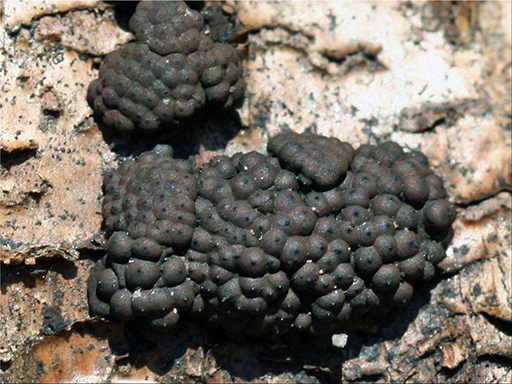
# Hypoxylon multiforme
- Birch woodwart
- black warty cushion-like
|
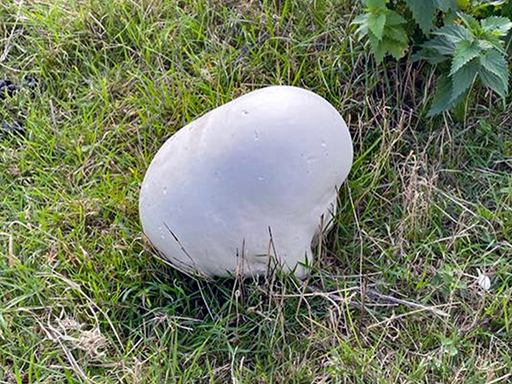
Langermannia gigantea
- Giant puff ball
|
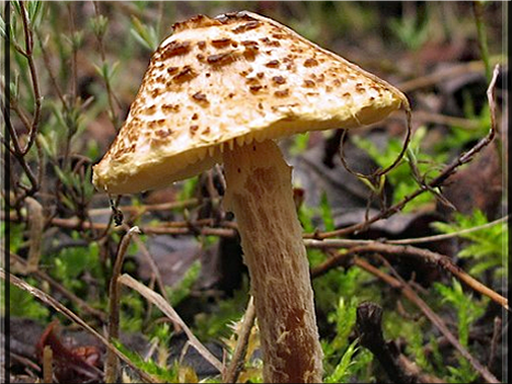
* Lepiota castanea
- Chestnut dapperling
- Elm
|
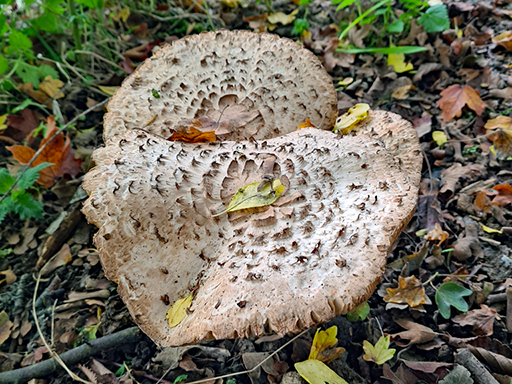
Macrolepiota procera
- Parasol mushroom
- West edge of the Toll Wood meadow
- Found in groups and singly
-- also 2023 Foray in adjoining meadow |
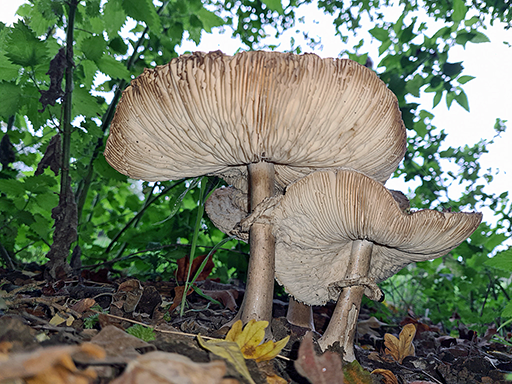
Macrolepiota procera
- Parasol mushroom
- West edge of the Toll Wood meadow
- Found in groups and singly
-- also 2023 Foray in adjoining meadow
|
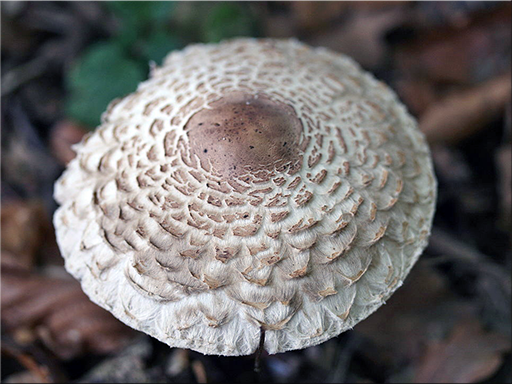
# Macrolepiota rhacodes
- Shaggy parasol
- >12cm open diameter
|
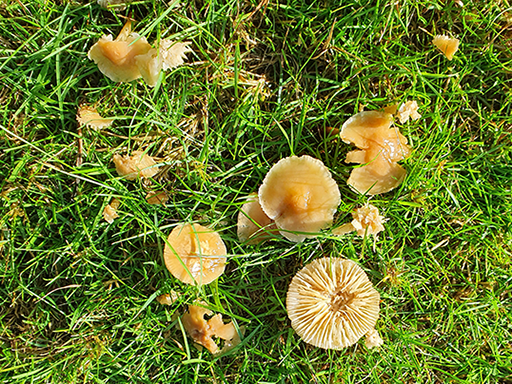
* Marasmius oreades
- Fairy Ring Champignon
- In adjoining field
- image Sarah Vaughan
|
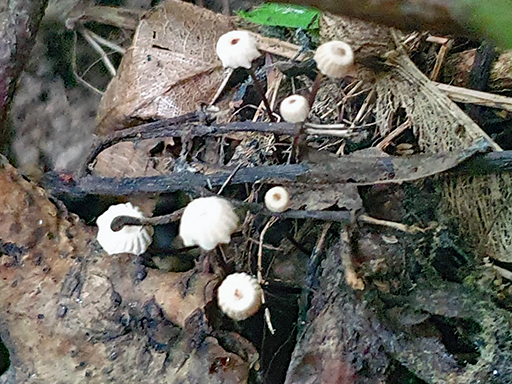
Marasmius rotula (query)
- Collared parachute
- White cap, brown stem
- Common on twigs and roots, occasionally leaves (06.23 SV)
|
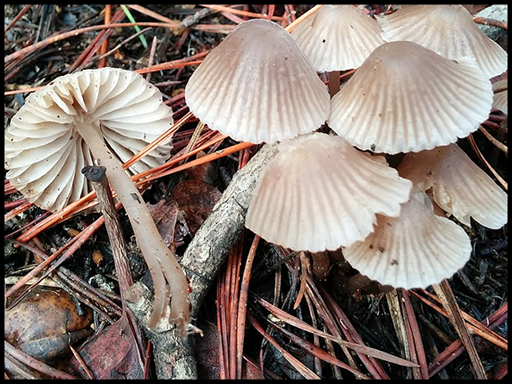
* Mycena capillaripes
- Pink edge Bonnet
- In adjoining field
|
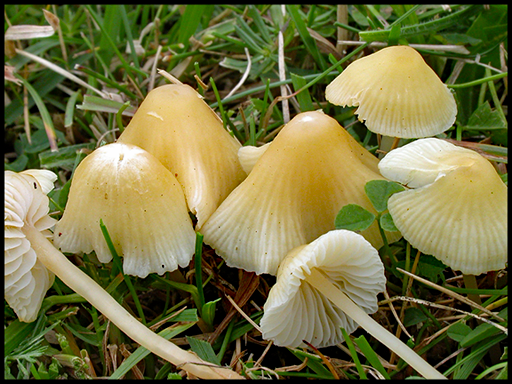
* Mycena flavoalba
- Ivory Bonnet
- In adjoining field
|
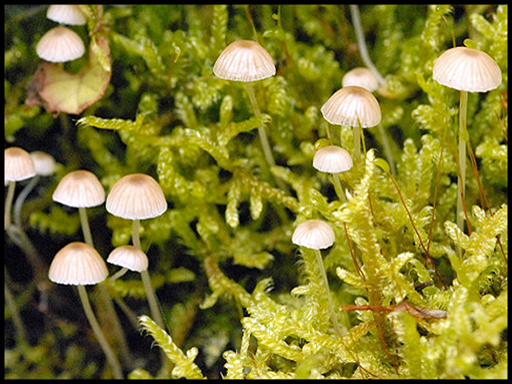
* Mycena hiemalis
- Bonnet
- On elm
|
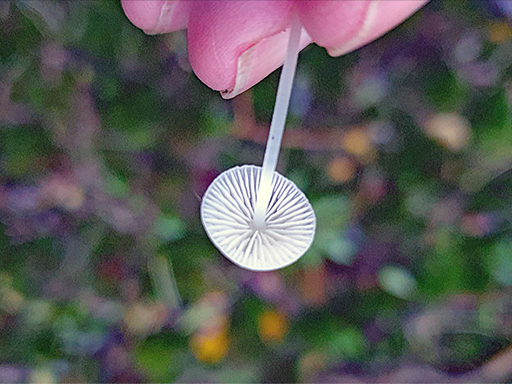
* Mycena hiemalis - gills
- Bonnet
- On elm
|

* Mycena rorida (Roridomyces rorida)
- Dripping bonnet
- On elm
|
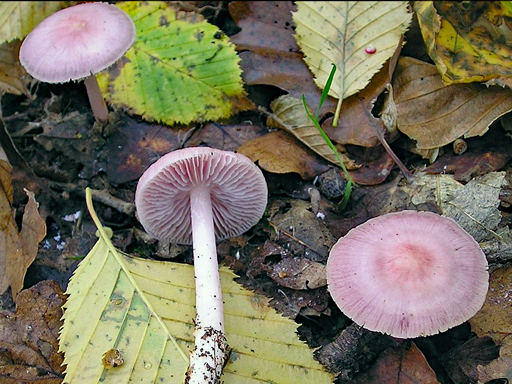
* Mycena rosea
- Rosy Bonnet
- Under elm
|

Phlyctis argenti
- Whitewash Lichen
|
|
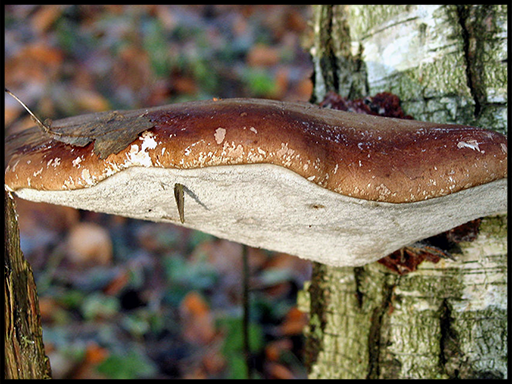 # Piptoporus betulinus # Piptoporus betulinus
- Birch Polyphor/ Razor strop fungus
- exclusive to Birch
|
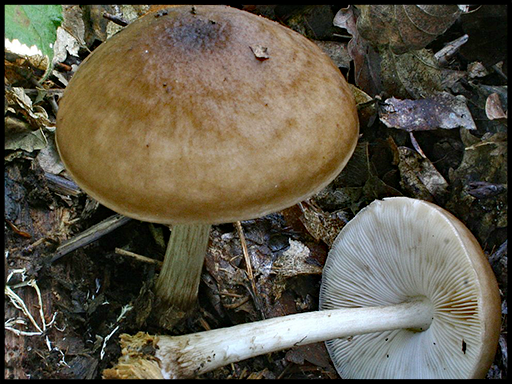 # Pluteus cervinus # Pluteus cervinus
- Deer Shield
- Dead wood
|
|

# Pluteus salicinus
- Willow shield?
- dead wood
|
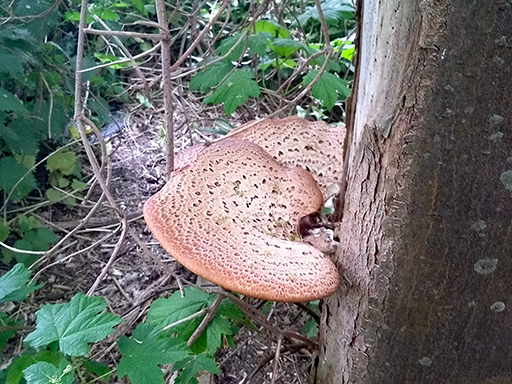 * Polyporus squamosus * Polyporus squamosus
- Dryad's Saddle
- Elm, beech & sycamore
(also 2023 foray)
|
 * Polyporus squamosus * Polyporus squamosus
- Dryad's Saddle
- Elm, beech & sycamore
(also 2023 foray)
|
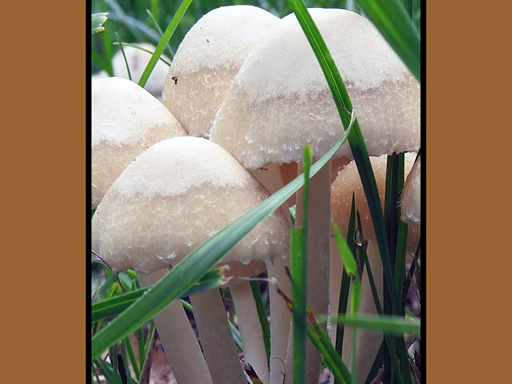 # Psathyrella candolleana # Psathyrella candolleana
- Pale Brittlestem
-
widespread
|
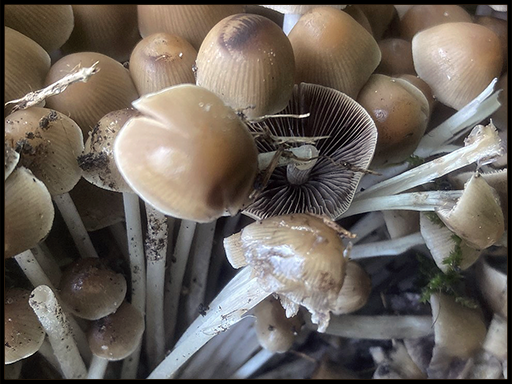 # Psathyrella multipedata # Psathyrella multipedata
-
Clustered Brittlestem
|
 * Psilocybe semilanceata * Psilocybe semilanceata
- Magic Mushroom/ liberty cap
- In adjoining field
|
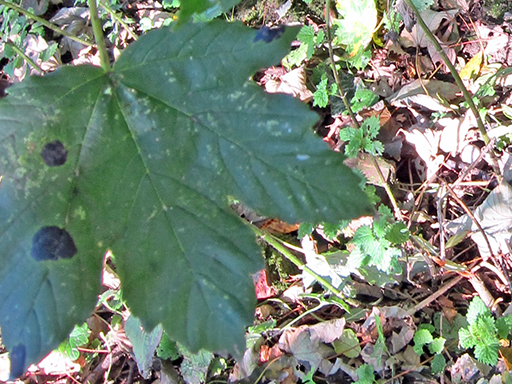 # Rhytisma acerinum # Rhytisma acerinum
- Tar Spot
- sycamore leaves
|
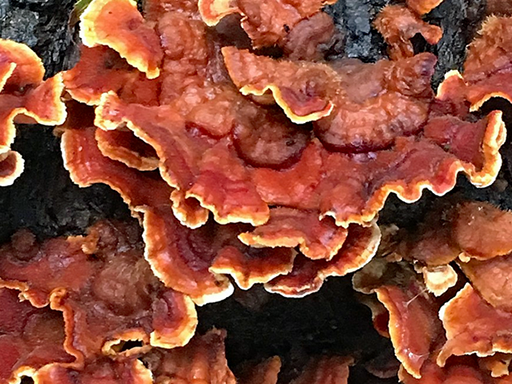 * Stereum gausapatum * Stereum gausapatum
- Bleeding Oak Crust
- Elm
|
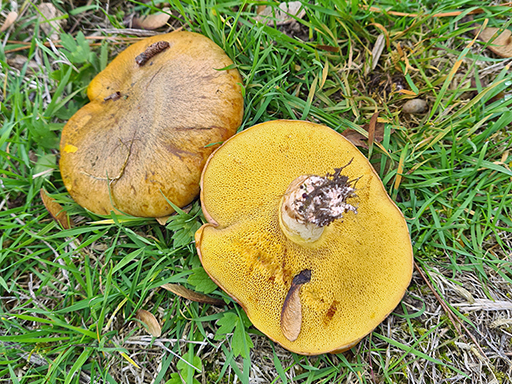 Suillus collinitus - possibly Suillus collinitus - possibly
- Boletus
-
Associated with pines usually [no live pines present - a dead Scots Pine sits inside the shaded woodland]
|
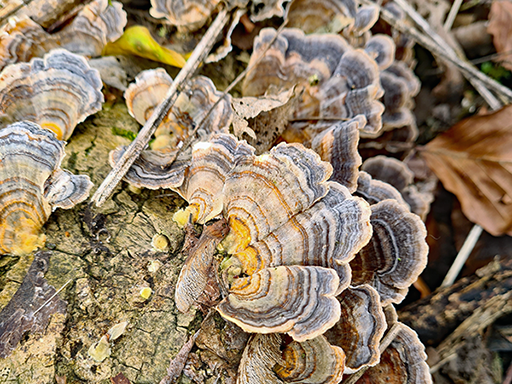 Trametes versicolor Trametes versicolor
- Turkey Tail
- near Elm and Hornbeam
(also 2023 foray on elm stump)
|
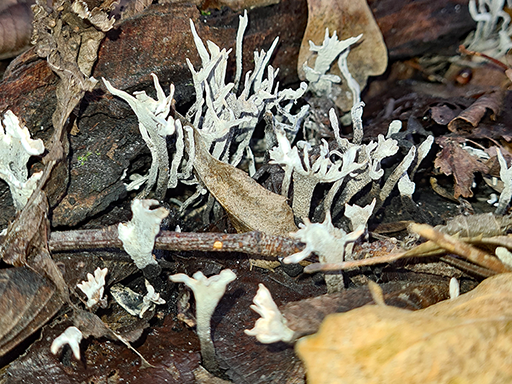 Xylaria hypoxylon Xylaria hypoxylon
- Stag's Horn or Candlesnuff
- Near wild cherry
(also 2023 foray)
|
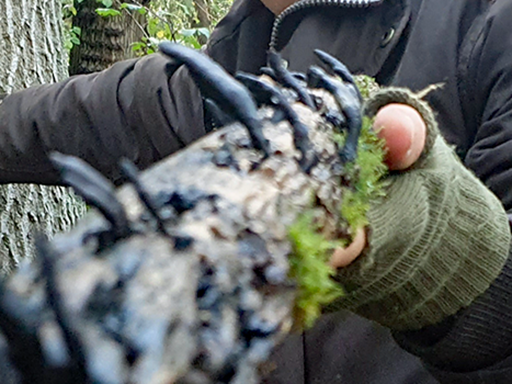 # Xylaria polymorpha # Xylaria polymorpha
- Dead Man's Fingers
- on dead wood
(image from 2023 foray - S Vaughan)
|
If you want an idea of which trees live with which fungi - you could start with a very interesting article and supporting table compiled by Attila Fodi, published on "Wildfooduk" website.
If you want to learn more, join an expert-led fungus foray such as those organised by the Lynsted with Kingsdown Society. The latest Fungus Foray was led by Martin Newcombe (opposite), recorder, on 28th October 2023 (2023 report). You can see the earlier 2005 Toll Wood Report.



 * Armillaria mellea
* Armillaria mellea











 * Coprinellus disseminatus
* Coprinellus disseminatus































 * Psilocybe semilanceata
* Psilocybe semilanceata
 * Stereum gausapatum
* Stereum gausapatum


 # Xylaria polymorpha
# Xylaria polymorpha